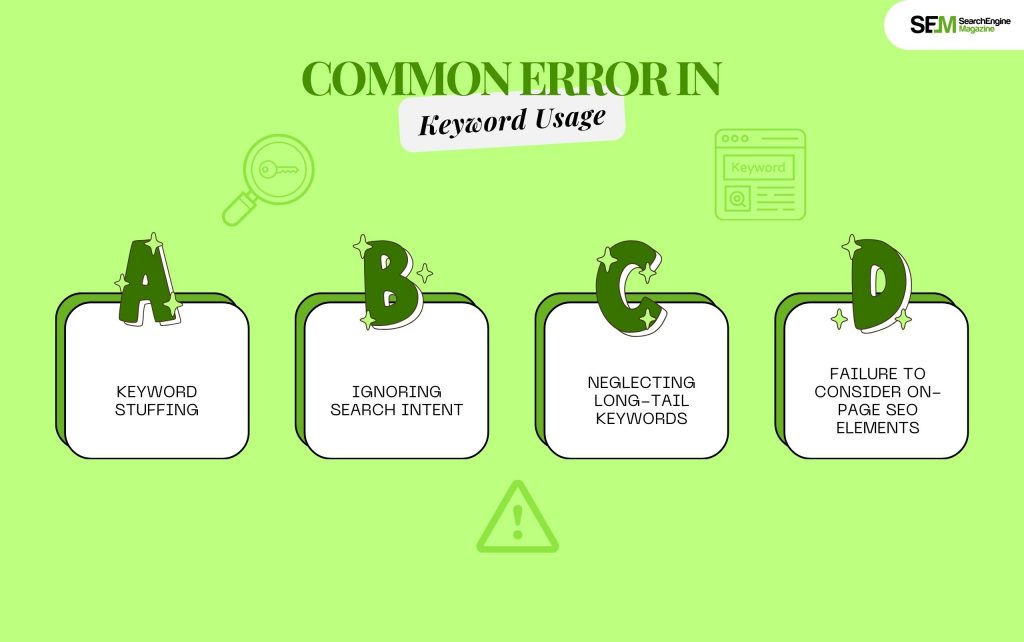How To Know If Someone Blocked You On iMessage? 5 Secret Hacks!
Apr 16, 2025

Apr 16, 2025

Apr 16, 2025

Apr 15, 2025

Apr 11, 2025

Apr 11, 2025

Apr 11, 2025

Apr 08, 2025

Mar 29, 2025
Sorry, but nothing matched your search "". Please try again with some different keywords.


Working for search engine optimization means helping the website rank higher on search engine results pages. A part of that is keyword knowledge and how it should be used.
But how many keywords should you use on a page, and how does search intent factor into keyword strategy? In this article, we’ll dive into these questions: how many SEO keywords should I use and explore the best SEO keyword optimization practices?

Keywords can be described as a word or phrase a user may search for using a search engine for information, product, or service.
To an SEO expert, these keywords indicate the searches that your content should rank on. For this reason, keywords become integral parts of search algorithms created to assist a user’s queries to retrieve relevant content.
Keywords are crucial in ranking search engines because they tell the search engine what the page refers to.
Every time a search engine crawls a page, it scans its content to determine how well it matches the user’s intent in the search. How relevant and well-optimized the keywords will determine higher chances of ranking for those terms.

There is no one-size-fits-all for the number of keywords you should have on a page. That’s just too many variables: length of content, competitiveness of those keywords, etc.
It’s usually suggested you go after at least one primary keyword and a few secondary ones simultaneously. 1-2 tends to work pretty standard for a primary keyword, and 3-5 is a good number to target as your second line of attack for most pages.
The keywords you’d like to rank for. Closely related to the page’s content and the page’s subject. You’re writing a blog on SEO; your primary keyword could be “SEO strategies.”
These secondary keywords are the supporting phrases or terms that come from the primary keyword; of course, they do not necessarily form the focus but help make it large and comprehensive. For example, “SEO tools” or “technique of on-page SEOs.”

Keyword density refers to how often a keyword appears compared to the absolute word length.
Traditionally, SEO practitioners target between 1-3% as keyword density. Currently, this remains a strategy in modern SEO is not paramount.

While it is important to include your target keywords within the content, over-optimization can harm ranking. Keyword stuffing—when keywords are used in a way that is unnatural and out of context—can lead to penalties from search engines.
The essence is to write content that naturally flows, is valuable, and is beneficial to the user without forcing keywords where they do not belong.
If you want to learn more about how keywords have influence on content, let me share with you the aspects that will create a better understanding of SEO optimization. Some of the factors that determine how many keywords to focus on a page are these:
It’s important to know if there’s an intent behind the search query. Is it informational? Is it transactional, or is it just to compare?
If you target keywords that reflect the intent behind the search query, you’re ranking better and getting better, more relevant traffic.
A highly contented word count can automatically leave space for keyword use without stuffing. Short pages, product descriptions or landing pages, can get away with a couple of targeted keywords.
There are very competitive keywords that require more work, and long-tail keywords to better chances of ranking.

There are some common mistakes marketers make when it comes to keyword usage:
Overuse of keywords so that the content does not seem like a normal composition. It may attract a penalty from the search engine.
Focus on using keywords without a mindset of what users may need when using the search bar, resulting in misaligned content and a bad user experience.
Long-tail keywords (for instance, “best SEO practices for 2024”) may be easier to rank than broad keywords and attract more qualified traffic.
Keywords should not only be placed in the body content. They should also appear in titles, meta descriptions, headers, and image alt texts.
Focus on search whether the searcher is looking for information (informational intent), a product transactional intent, or something else (navigational intent). Optimize all your content to answer and meet these needs.
Organic inclusion of keywords includes keywords where they are reasonable. Use them in title headings and throughout the content but try to make sure the content remains natural and readable.
Do both short-tail and long-tail keywords. While short-tail keywords increase search volumes, long-tail brings in more targeted traffic.
Content should solve a problem, answer a question, or provide value to the user. High-quality content is far more likely to naturally attract links and rank well.
Use related terms and synonyms besides your primary and secondary keywords so that search engines know what to expect from your content.

Keyword usage is constantly evolving. There are several keyword usage strategies that are trending in recent times. Some emerging trends include:
More context and intent understanding. Search engines move away from matching the words of a keyword to a general sense of the question.
With voice assistants like Siri, Alexa, and Google Assistant now on the scene, voice searches are much longer and more conversational. In other words, it means more long-tail, natural language keywords.
The more popular AI becomes, the more crucial it is to know the subtleties of natural language. Keywords have to be woven into something that reads like natural language and is of worth to the user.
There is no set-in-stone rule in SEO on keyword use per page. What is important is being able to maintain the right balance between your primary and secondary keywords. This calls for avoiding over-optimization and concern for the user’s search intent.
A strategic approach toward keywords with good quality content, with a concern for the user experience, will help you rank higher in the search results and provide meaningful traffic to your website.
Remember, SEO is a long game where things are changing constantly. It’s good to be updated with the best practices for long-term success. Now that you know the answer to your question, how many SEO keywords should I use? So, if you think the article was informative and knowledgeable, give this article a like and comment below.
You May Like To Read:
Nabamita Sinha loves to write about lifestyle and pop-culture. In her free time, she loves to watch movies and TV series and experiment with food. Her favorite niche topics are fashion, lifestyle, travel, and gossip content. Her style of writing is creative and quirky.
View all Posts
How To Know If Someone Blocked You On iMessag...
Apr 16, 2025
7 Website Design Mistakes That Are Hurting Yo...
Apr 16, 2025
Programmable Dynamic SEO for Location-Based P...
Apr 15, 2025
Google Boba Game: How To Play This Fun Game B...
Apr 11, 2025
Which Is The Best Video Search Engine Of 2025...
Apr 11, 2025

